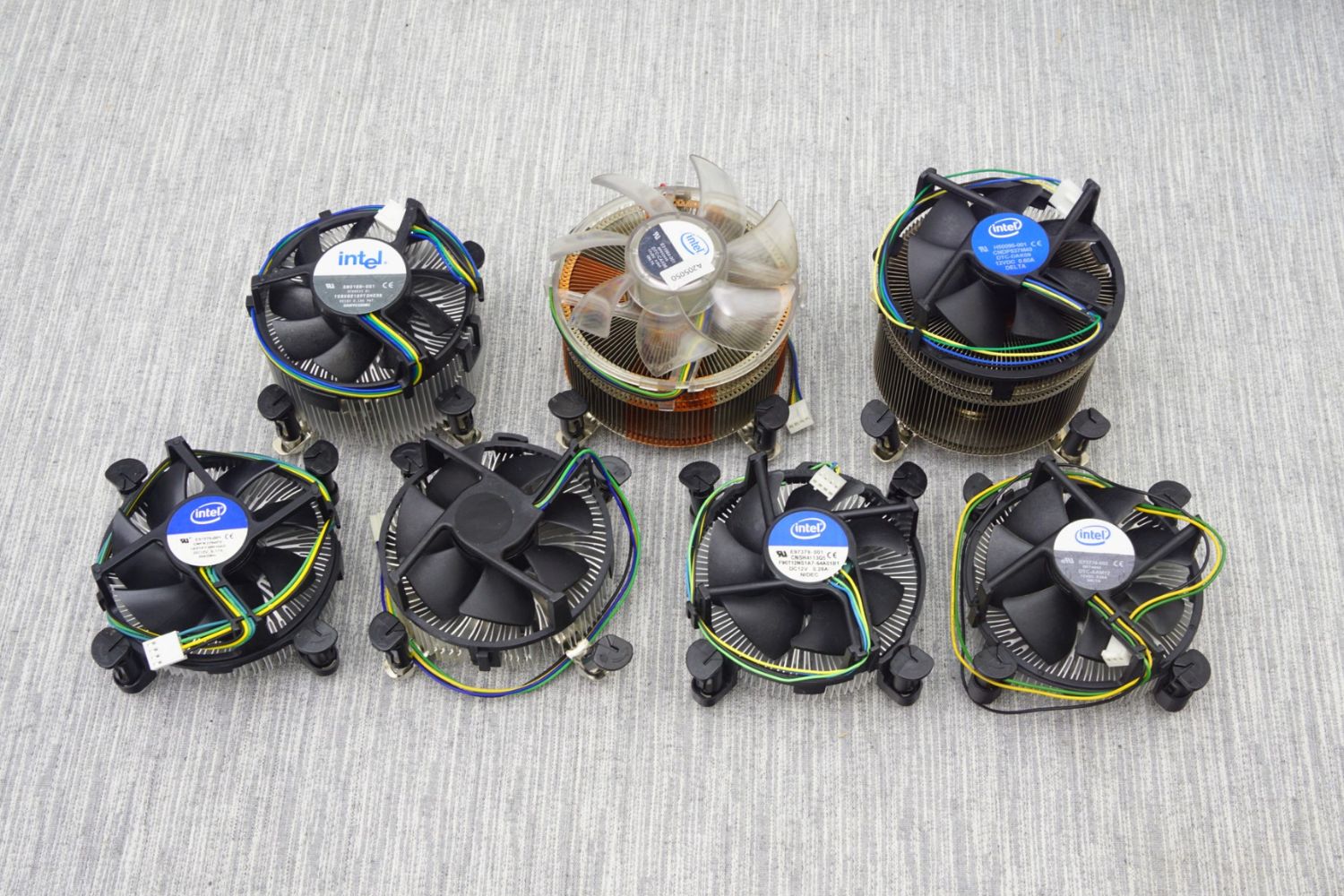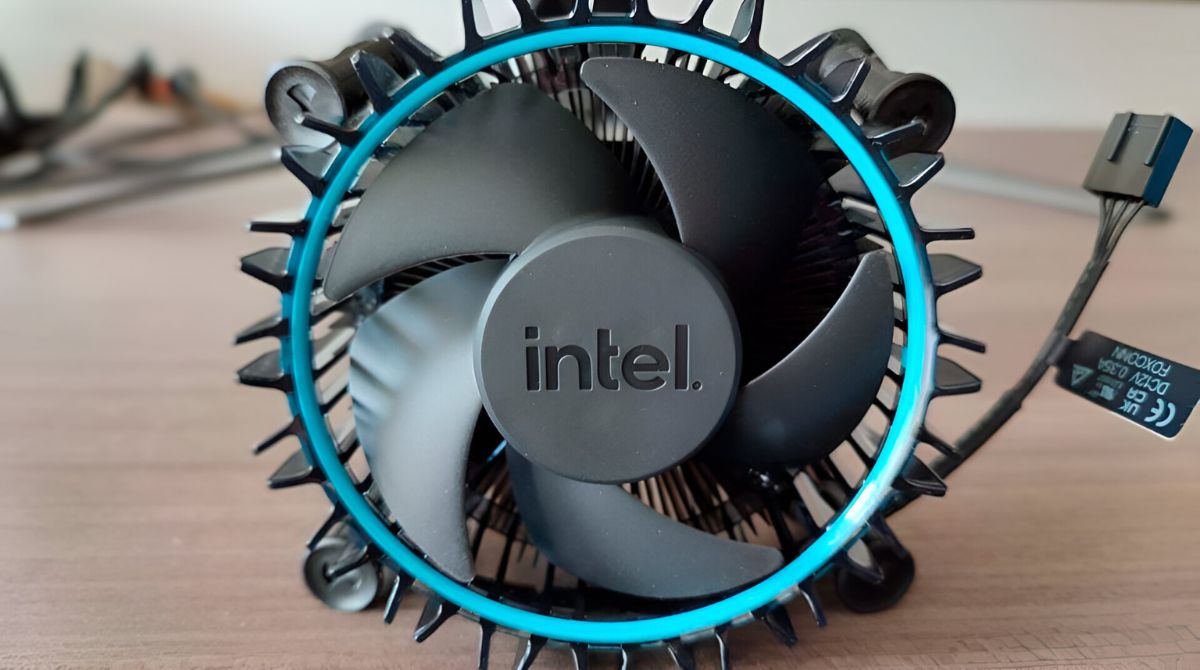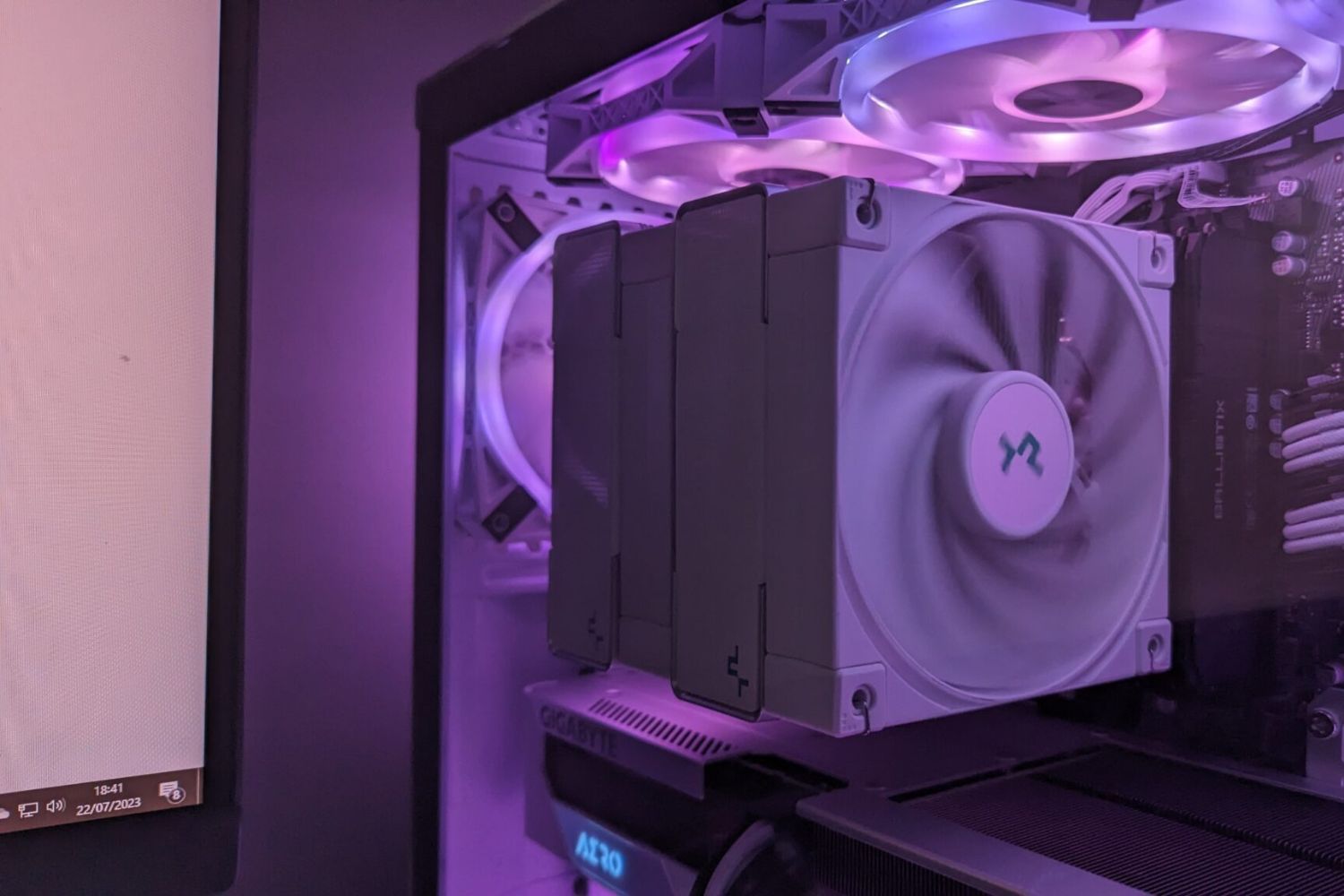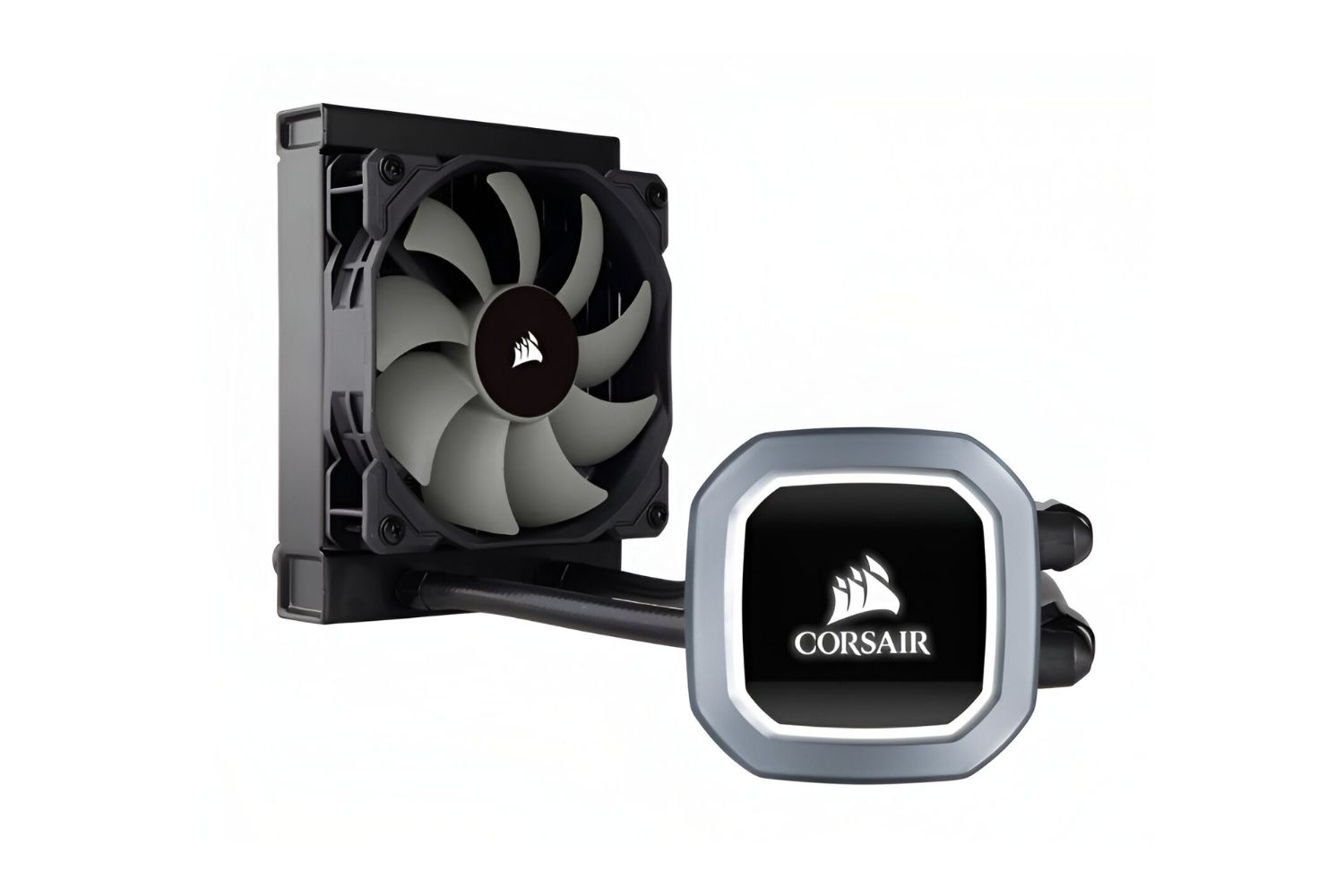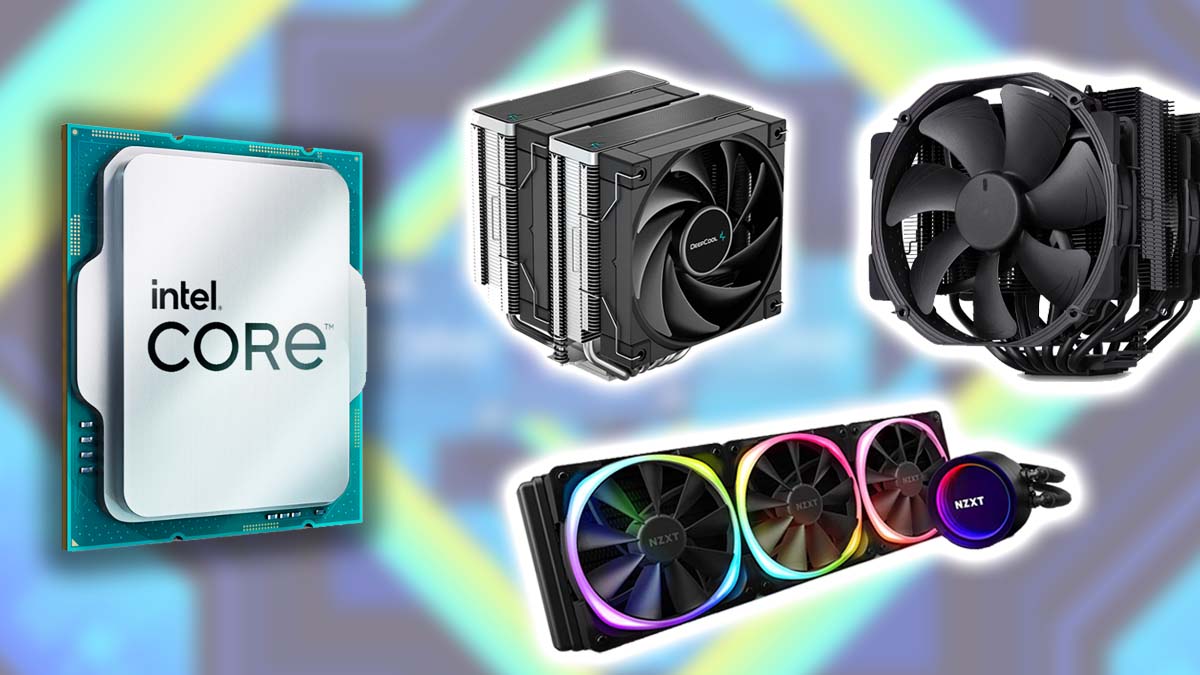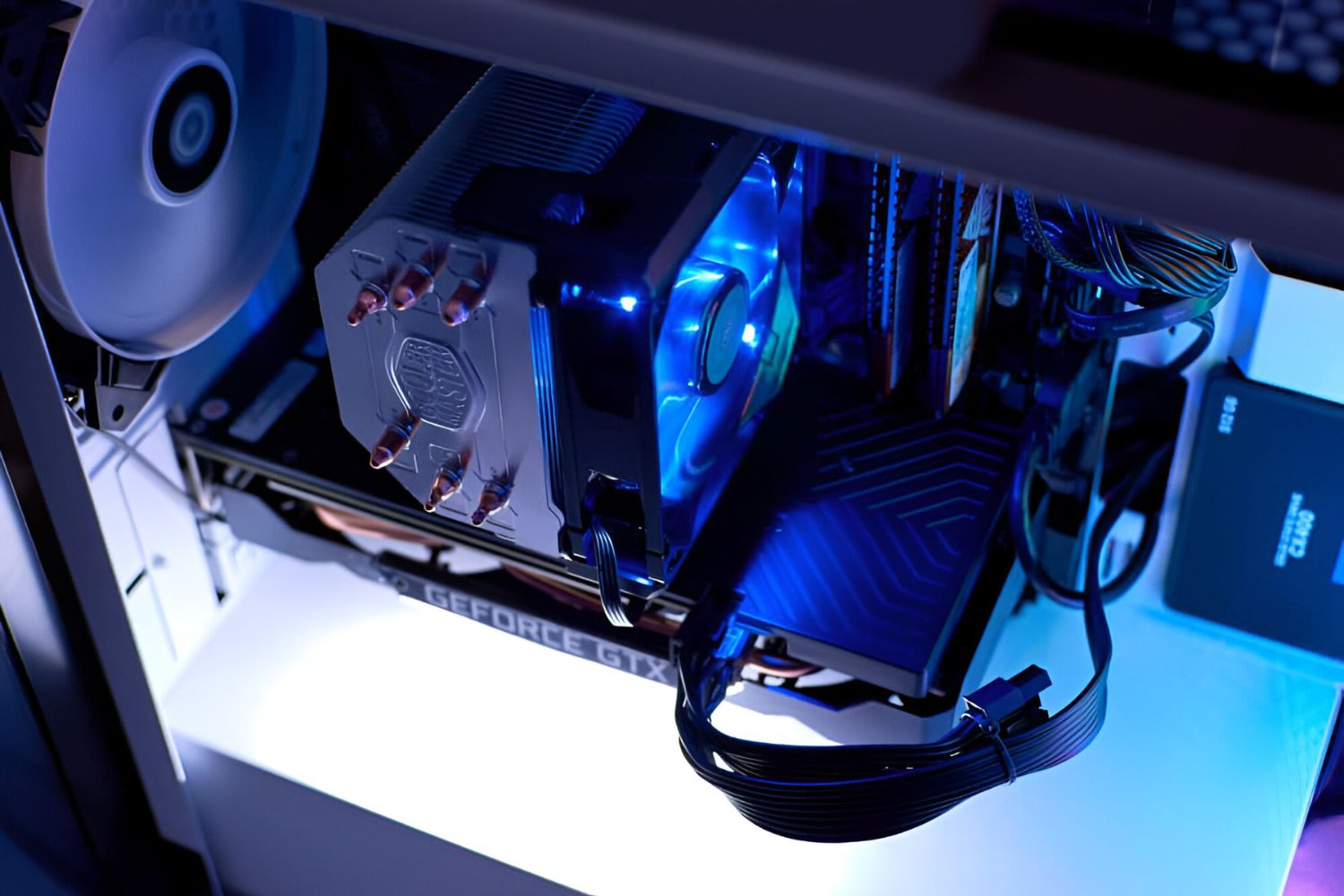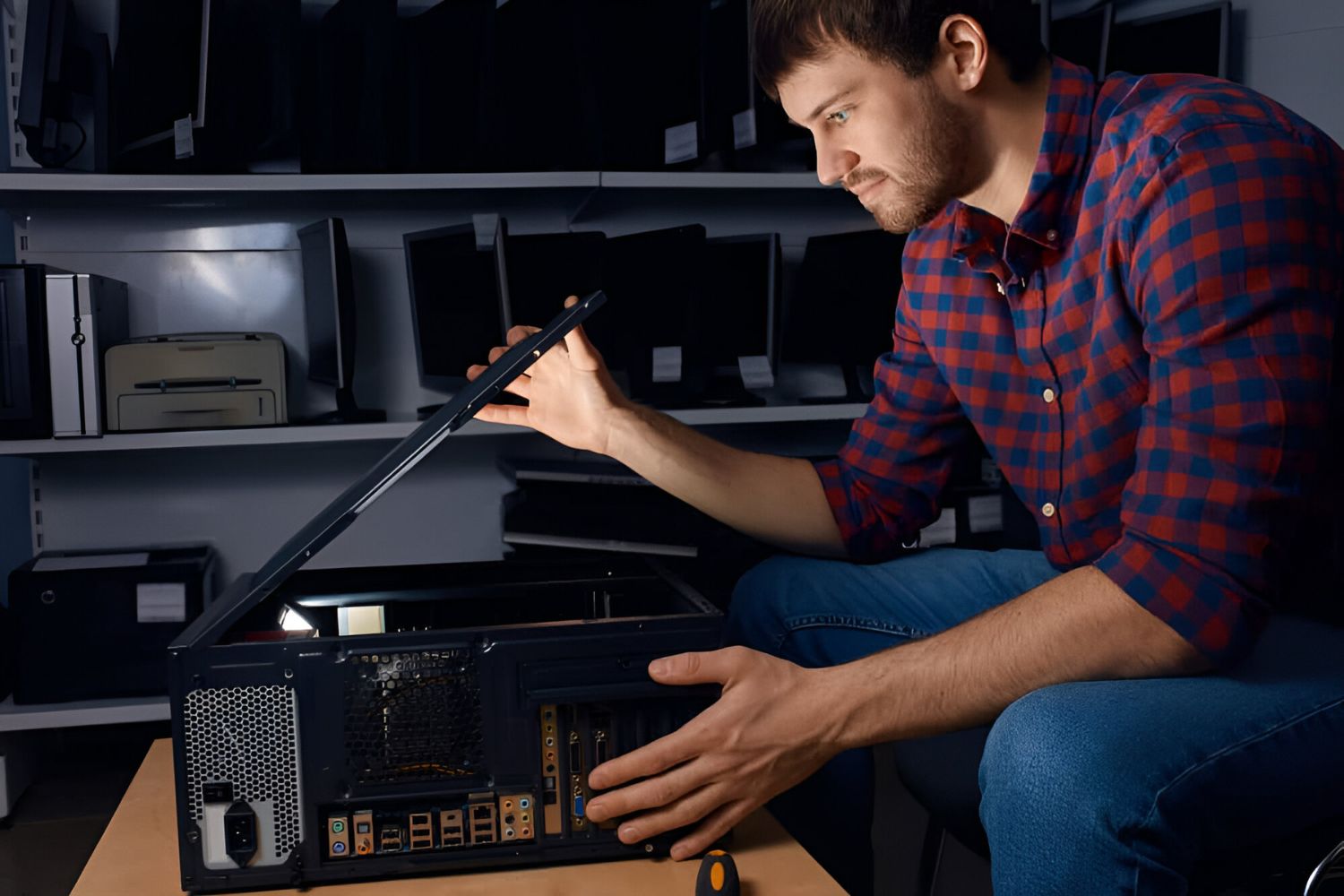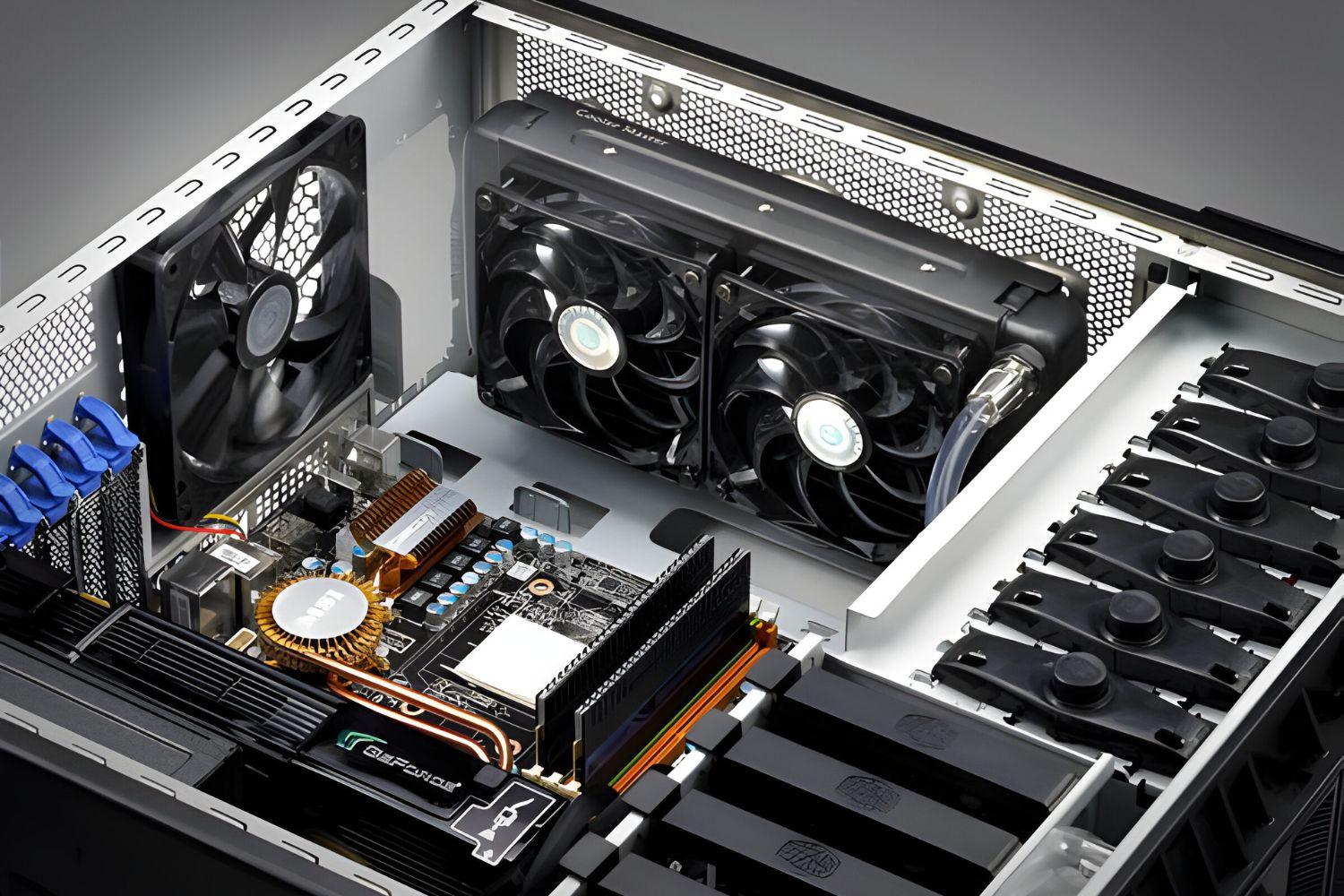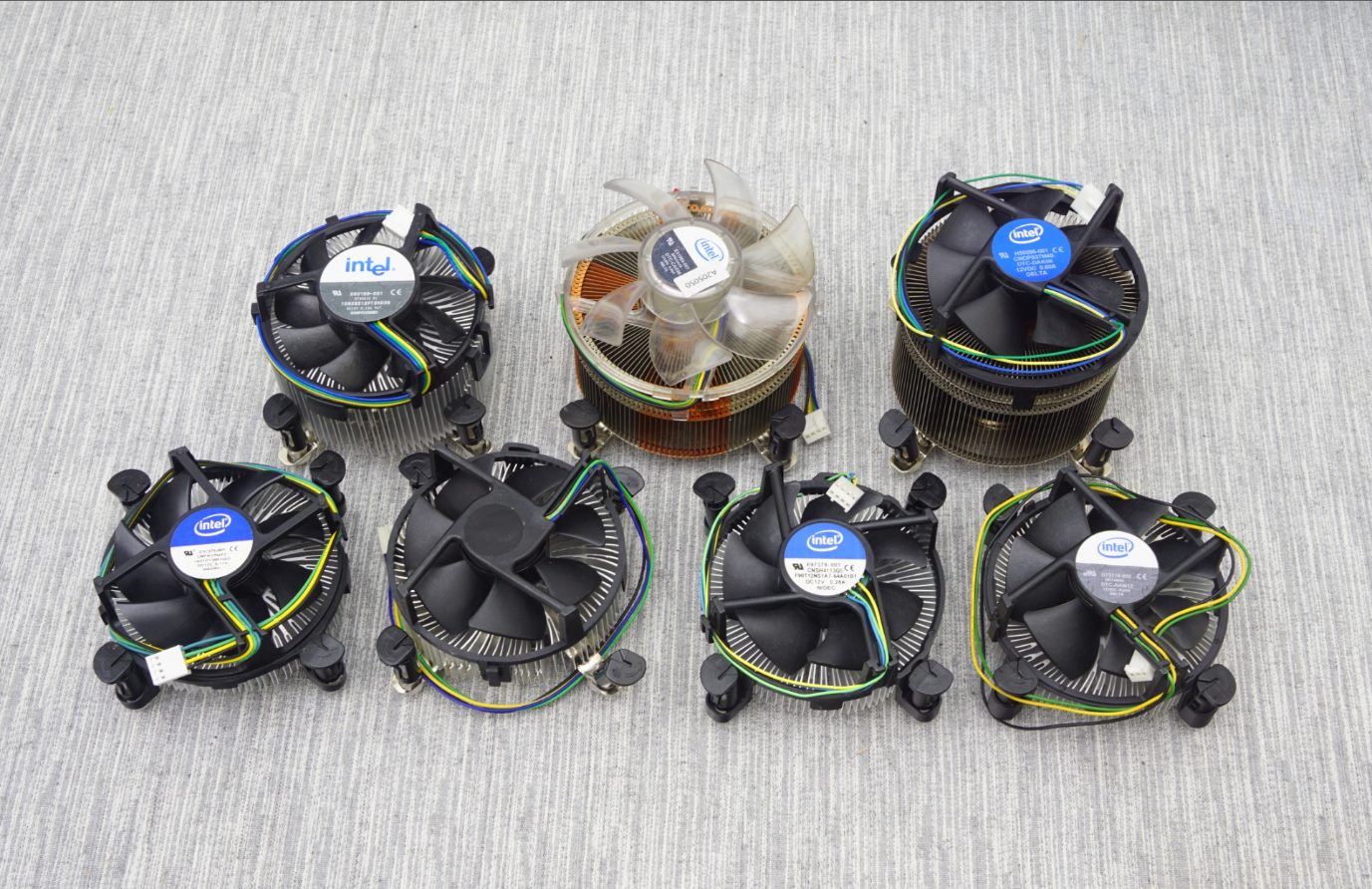Introduction
Welcome to the world of computer hardware! As you dive deeper into exploring the components that make up your computer, you may come across the term “stock CPU cooler.” Whether you’re a novice or an experienced computer enthusiast, understanding what a stock CPU cooler is and its role in maintaining your processor’s temperature is crucial.
A CPU (Central Processing Unit) is the brain of your computer, responsible for executing and performing all the tasks. As it processes data, it generates heat, which can significantly impact its performance. An overheated CPU can lead to system instability, reduced lifespan, and even permanent damage. This is where the CPU cooler comes into play. It helps dissipate the heat produced by the CPU, keeping it within safe operating temperatures.
A stock CPU cooler, also known as a retail or bundled cooler, is the default cooling solution that comes bundled with your processor when you purchase it. It is designed to be a cost-effective and functional cooling solution for standard usage.
Now, let’s delve deeper into what exactly a stock CPU cooler entails and whether it is sufficient for your cooling needs.
What is a Stock CPU Cooler?
A stock CPU cooler is a cooling solution provided by the processor manufacturer as part of the package when you purchase a new CPU. It is designed to meet the basic cooling requirements of the processor within a predefined budget. While the specific design and features may vary depending on the processor model and manufacturer, stock CPU coolers are generally simple and straightforward in their design.
Stock CPU coolers typically consist of a heatsink, a fan, and a thermal interface material (TIM). The heatsink is usually made of aluminum or a combination of aluminum and copper and is responsible for absorbing and dispersing the heat generated by the CPU. The fan, often attached to the heatsink, helps to dissipate the heat by blowing air over the surface of the heatsink. The TIM acts as a conductor between the CPU and the heatsink, ensuring efficient heat transfer.
These coolers are designed to fit the specific socket type of the processor, ensuring compatibility and ease of installation. They come pre-applied with the TIM, eliminating the need for manual application.
It is important to note that stock CPU coolers are generally designed to meet the cooling requirements of processors with moderate power consumption and clock speeds. For high-performance CPUs or for overclocking purposes, aftermarket coolers are often recommended to achieve better cooling efficiency.
Overall, a stock CPU cooler provides a basic cooling solution that can adequately manage the heat generated by most CPUs during standard usage. However, if you require optimal cooling performance or plan to push your processor beyond its default settings, you may want to consider upgrading to an aftermarket cooler.
Features of a Stock CPU Cooler
Stock CPU coolers come with a set of features that make them suitable for cooling the processor in standard usage scenarios. While they may not offer advanced cooling capabilities like their aftermarket counterparts, they still have some distinct features worth highlighting:
- Cost-effective: One of the biggest advantages of a stock CPU cooler is its affordability. As it comes bundled with the processor, you don’t have to spend extra money on purchasing a separate cooling solution.
- Compatibility: Stock CPU coolers are specifically designed to fit and work seamlessly with the processor they are bundled with. This ensures compatibility and hassle-free installation.
- Simplicity: These coolers are designed to be user-friendly, with simple installation processes that even beginners can handle without much difficulty. They often come with detailed instructions or video tutorials to guide you through the installation process.
- Decent Cooling Performance: Stock CPU coolers are designed to handle the heat output of standard processors effectively. They can maintain the CPU temperature within safe limits during average usage scenarios, ensuring stable and reliable performance.
- Low Noise Level: Stock CPU coolers are generally designed to operate quietly. They come with a fan that is optimized to provide efficient cooling while keeping noise levels to a minimum.
It is important to note that the performance and features of a stock CPU cooler can vary depending on the specific processor model and manufacturer. Therefore, it is recommended to check the specifications provided by the manufacturer to understand the particular features of the stock cooler that comes with your CPU.
While these features make stock CPU coolers suitable for typical usage scenarios, they may not be ideal for demanding tasks such as heavy gaming, video editing, or overclocking. In such cases, upgrading to an aftermarket cooler with more advanced features and better cooling performance is often recommended.
Pros and Cons of Using a Stock CPU Cooler
Using a stock CPU cooler has its advantages and disadvantages. Let’s explore the pros and cons to help you make an informed decision:
- Pros:
- Affordability: The primary advantage of using a stock CPU cooler is its cost-effectiveness. As it comes bundled with the processor, you don’t need to spend extra money on purchasing a separate cooler.
- Compatibility: Stock CPU coolers are specifically designed to fit the processor they come with, ensuring compatibility and easy installation.
- Simplicity: Stock coolers are generally user-friendly, with simple installation processes that even beginners can handle without much difficulty.
- Decent Cooling Performance: Stock CPU coolers are designed to meet the cooling needs of standard processors during average usage scenarios, providing adequate cooling performance.
- Noise Level: Stock coolers are often optimized to operate quietly, keeping noise levels to a minimum.
- Cons:
- Limited Cooling Capacity: Stock CPU coolers may not be able to handle the heat generated by high-performance processors or during intense tasks like gaming or video editing. They have limitations when it comes to cooling capacity.
- Potential Heat Issues: In demanding scenarios, stock coolers may struggle to maintain the CPU temperature within safe limits, which can lead to thermal throttling and reduced performance.
- No Overclocking Support: Overclocking, which involves increasing the clock speed of your processor for better performance, generates more heat. Stock coolers may not be sufficient for effective cooling during overclocking.
- Build Quality: Stock coolers are often made of lower-cost materials and may not have the same build quality as aftermarket coolers. This can impact their durability and longevity.
While a stock CPU cooler can be suitable for standard usage scenarios, if you require optimal cooling performance or plan to engage in tasks that require intensive processing power, upgrading to an aftermarket cooler may be necessary to ensure better temperature management and system stability.
Is a Stock CPU Cooler Sufficient for Your Needs?
Whether a stock CPU cooler is sufficient for your needs depends on a few factors, such as your usage requirements, processor model, and environmental conditions. Let’s analyze the key considerations:
Standard Usage: If you primarily use your computer for everyday tasks such as web browsing, word processing, and multimedia consumption, a stock CPU cooler is likely to be sufficient. They are designed to handle the heat output of standard processors under normal operating conditions.
Processor Model: The cooling requirements vary among different processor models. While lower-power processors typically generate less heat, high-performance models, especially those designed for gaming or intensive tasks, may require more efficient cooling solutions. If you have a high-performance processor or plan to engage in tasks that demand significant processing power, upgrading to an aftermarket cooler is recommended.
Environmental Conditions: The ambient temperature and airflow within your computer case can impact the cooling performance of a stock CPU cooler. If your computer is located in a poorly ventilated area or experiences high ambient temperatures, the stock cooler may struggle to effectively dissipate heat. In such cases, upgrading to an aftermarket cooler with better cooling capabilities becomes necessary.
Overclocking: If you are interested in overclocking your processor to achieve higher performance, a stock CPU cooler may not be sufficient. Overclocking generates more heat, and stock coolers may struggle to keep the CPU temperature within safe limits during these scenarios. An aftermarket cooler designed for overclocking is recommended for effective heat management.
Ultimately, the decision to stick with a stock CPU cooler or upgrade to an aftermarket cooler depends on your specific needs and requirements. If you are satisfied with the cooling performance under your typical usage scenarios and don’t engage in demanding tasks that generate excessive heat, a stock cooler should suffice. However, if you want better temperature control, quieter operation, or plan to push your processor to its limits, investing in an aftermarket cooler is a wise choice.
Alternatives to Stock CPU Coolers
While stock CPU coolers can adequately meet the cooling needs of standard processors, there are alternative cooling solutions available that offer enhanced performance, efficiency, and customization options. Let’s explore some of the alternatives:
- Aftermarket Air Coolers: Aftermarket air coolers are popular alternatives to stock CPU coolers. They come in a variety of sizes, designs, and price ranges, offering better cooling performance and improved heat dissipation. These coolers typically feature larger heatsinks, additional heat pipes, and more powerful fans to effectively manage the increased heat generated by high-performance processors or during overclocking.
- Liquid Cooling: Liquid cooling, also known as all-in-one (AIO) or custom loop cooling, is a more advanced cooling solution that uses liquid coolant to move heat away from the CPU. AIO coolers are pre-built units that combine a pump, radiator, and fan, offering improved cooling performance and lower noise levels compared to stock coolers. Custom loop cooling allows for more customization and better temperature management, but it requires more expertise and investment.
- Compact Low-Profile Coolers: These coolers are designed for systems with space constraints, such as small form factor builds or compact cases. Compact low-profile coolers provide better cooling efficiency compared to stock coolers while maintaining a smaller footprint.
- Passive Coolers: Passive coolers offer a fanless design, relying purely on the heatsink to dissipate heat. They are suitable for low-power processors or situations where silent operation is a priority. However, they may not be suitable for processors with higher TDPs or intensive tasks.
- Open-Loop Custom Cooling: For enthusiasts, open-loop custom cooling allows for complete customization and control over the cooling system. It involves building a custom loop using individually chosen components, such as water blocks, radiators, pumps, and fittings. This option offers superior cooling performance but requires expertise, time, and maintenance.
When considering alternatives to stock CPU coolers, it’s important to assess your specific needs, budget, and level of technical expertise. While aftermarket coolers provide better cooling performance, they come at various price points and require careful consideration of compatibility with your processor and computer case.
It’s also worth noting that while upgrading to alternative cooling solutions offers benefits in terms of temperature control and noise reduction, it may not always be necessary for everyone. If you are satisfied with the performance and cooling capabilities of your stock cooler under your typical usage scenarios, there may be no urgent need to switch to an alternative cooling solution.
Conclusion
Choosing the right CPU cooler is essential for maintaining optimal performance and longevity of your computer’s processor. While a stock CPU cooler that comes bundled with your processor can adequately meet the cooling needs of standard usage scenarios, there are alternative cooling solutions available that offer enhanced performance, efficiency, and customization options.
If you primarily engage in everyday tasks like web browsing, word processing, and multimedia consumption, a stock CPU cooler should be sufficient to keep your processor within safe temperature limits. These coolers are designed to handle the heat output of standard processors and provide cost-effective cooling solutions.
However, if you have a high-performance processor, plan to engage in demanding tasks like gaming or video editing, or want to overclock your CPU, upgrading to an aftermarket cooler is recommended. Aftermarket coolers, such as air coolers and liquid cooling solutions, offer better cooling performance, improved heat dissipation, and the ability to handle higher thermal loads.
When considering alternatives to stock CPU coolers, it’s essential to assess your specific needs, budget, and technical expertise. Aftermarket coolers come in various sizes, designs, and price ranges, offering different cooling capacities to suit different requirements.
Ultimately, the decision to stick with a stock CPU cooler or upgrade to an aftermarket cooler depends on factors such as processor model, usage requirements, environmental conditions, and the desire for enhanced cooling performance. It’s essential to evaluate your specific needs and make an informed decision based on your usage patterns and priorities.
Whether you choose to stick with a stock CPU cooler or invest in an aftermarket cooling solution, proper cooling is crucial to ensure the long-term stability and performance of your computer. Regular maintenance and monitoring of CPU temperatures are recommended to prevent overheating and maintain system reliability.
Remember, finding the appropriate cooling solution that meets your needs and budget is essential for maximizing the lifespan and performance of your processor and ensuring a smooth computing experience.







